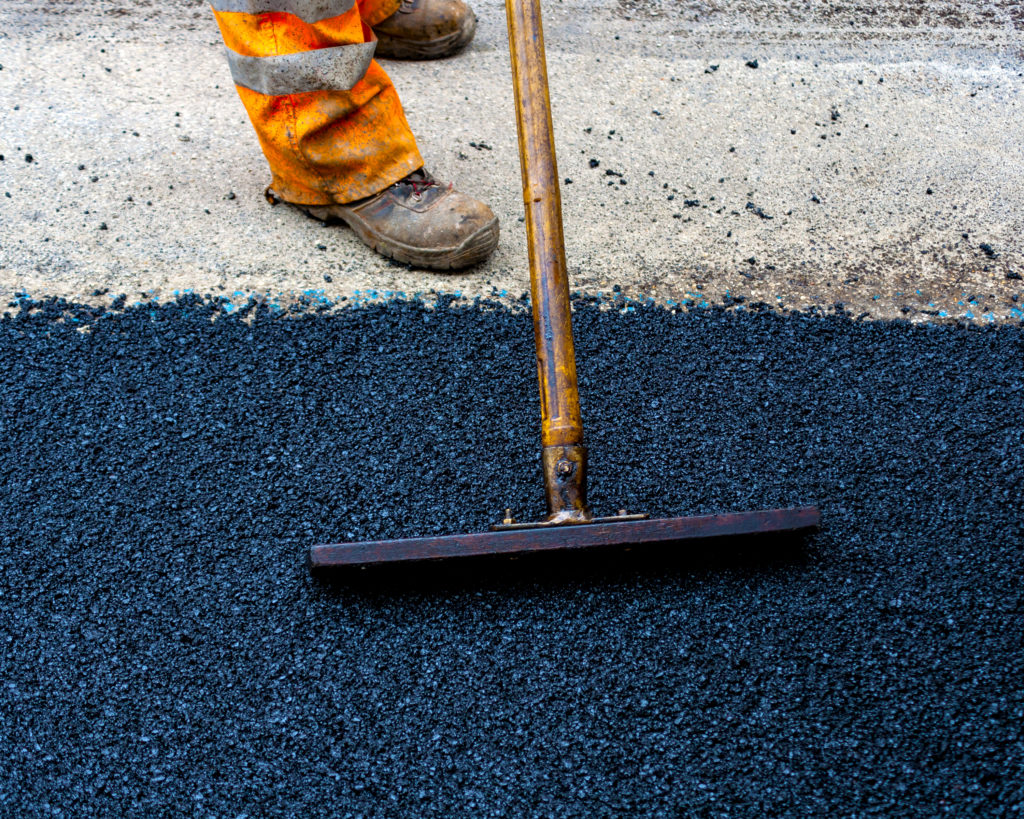Change Your Residential property's Landscape with Hot Mix Asphalt Paving Quality
Change Your Residential property's Landscape with Hot Mix Asphalt Paving Quality
Blog Article
Opening the Keys of Warm Mix Asphalt Innovation
Checking out the depths of warm mix asphalt modern technology reveals a globe where precise formulations and meticulous processes converge to shape our roads and infrastructure. The fusion of accumulations, fillers, and binders isn't simply a building task however a tactical orchestration of sturdiness and effectiveness. As we peer into the intricate dance of parts, a tapestry of strength and sustainability unravels. However what lies beneath this surface area of asphaltic proficiency, and what tricks wait to be unveiled in the world of leading advancements?
Value of Hot Mix Asphalt
Warm Mix Asphalt plays an essential duty in contemporary framework advancement as a result of its sturdiness and cost-effectiveness. As one of the most frequently made use of paving product for roads, freeways, and car park, Hot Mix Asphalt provides a series of benefits that add to its importance in building tasks. One key advantage is its capacity to endure hefty website traffic loads and extreme weather, providing a reputable and durable surface area for transportation networks. Additionally, Hot Mix Asphalt is cost-efficient in both initial construction and long-lasting upkeep, making it a recommended selection for many facilities jobs.
The sturdiness of Hot Mix Asphalt stems from its make-up, which includes aggregates, binder, and filler products that are thoroughly selected and blended to satisfy specific efficiency requirements. Overall, the value of Hot Mix Asphalt in framework advancement can not be understated, as it proceeds to be a cornerstone of modern-day construction techniques.
Parts of Asphalt Mixes
The make-up of asphalt mixes consists of very carefully picked accumulations, binder, and filler materials that are important for attaining details performance demands. Aggregates are the key part of asphalt mixes, offering stamina and security. The binder, commonly bitumen or asphalt cement, holds the aggregates together and offers versatility and toughness to the mix.
The mix and percentage of these parts play a significant role in identifying the high quality and performance of the asphalt mix. Engineers thoroughly develop the mix to satisfy certain demands, thinking about aspects like web traffic quantity, climate conditions, and pavement lifespan. Proper selection and harmonizing of accumulations, binder, and fillers are crucial for developing long lasting, resilient asphalt sidewalks.
Mixing and Production Techniques

Once the aggregates are selected, the binder, typically asphalt cement, is included in bind the materials together. The binder's high quality and quantity substantially affect the mix's versatility, stamina, and resistance to ecological variables. In addition, fillers like moisturized lime or Portland cement may be included to boost certain attributes of the asphalt mix, such as its workability or wetness resistance.
During manufacturing, the accumulations and binder are heated up, usually between 250-325 ° F(121-163 ° C ), to facilitate blending and make sure appropriate covering of the aggregates. The blending process must be thorough to attain a homogeneous mixture that advertises the preferred performance features of the asphalt. Different techniques, such as set mixing or drum Check Out Your URL mixing, are used to accomplish consistent and high-grade asphalt blends for building projects.
Aspects Affecting Asphalt Efficiency
Elements affecting asphalt efficiency encompass a variety of variables that influence the resilience, durability, and total quality of asphalt pavements. One crucial factor is the quality Click This Link of materials utilized in the asphalt mix.

Environmental problems also affect asphalt performance. Temperature level variants, wetness seepage, and traffic loads can all influence the structural honesty of the sidewalk. Design considerations, such as sidewalk thickness and water drainage, are vital in ensuring the long-lasting efficiency of the asphalt pavement. By thoroughly taking into consideration these engineers, professionals and variables can optimize asphalt performance and improve the solution life of sidewalks.
Sustainable Practices in Asphalt Technology

In addition, the advancement of warm-mix asphalt (WMA) modern technologies has actually gotten grip in recent times. WMA permits for the manufacturing and placement of asphalt mixes at lower temperature levels contrasted to typical hot-mix asphalt, leading to lowered power usage and greenhouse gas emissions. The use of permeable asphalt mixes can help minimize stormwater drainage problems by permitting water to penetrate through the sidewalk and into the ground, advertising natural water filtration and reenergize processes. By implementing these lasting practices, the asphalt industry can add to developing an extra eco friendly and resistant framework network.
Verdict
Finally, warm mix asphalt modern technology plays an essential function in contemporary facilities growth as a result of its resilience and cost-effectiveness. By very carefully stabilizing parts, using correct blending strategies, and taking into consideration numerous factors, designers can create high-quality asphalt mixes that withstand heavy traffic loads and harsh weather problems. Welcoming lasting techniques, such as utilizing warm-mix innovations and recycled materials, further boosts the ecological kindness of asphalt innovation.
Mixing and manufacturing strategies in hot mix asphalt technology involve the specific mix and processing of aggregates, binder, and fillers to develop a high-performance and resilient asphalt mix.Elements affecting asphalt efficiency include a range of variables that influence the toughness, durability, and overall top quality of asphalt pavements. Lasting methods in asphalt technology incorporate different initiatives intended at decreasing the ecological effect of asphalt production and paving procedures. By incorporating redeemed asphalt pavement (RAP) and recycled asphalt tiles (RAS) into brand-new asphalt blends, the industry can substantially decrease the intake of raw materials and power, while also lowering landfill waste.
WMA permits for the production and positioning of asphalt mixes at lower temperature levels compared to typical hot-mix asphalt, resulting in decreased power consumption and greenhouse gas discharges.
Report this page